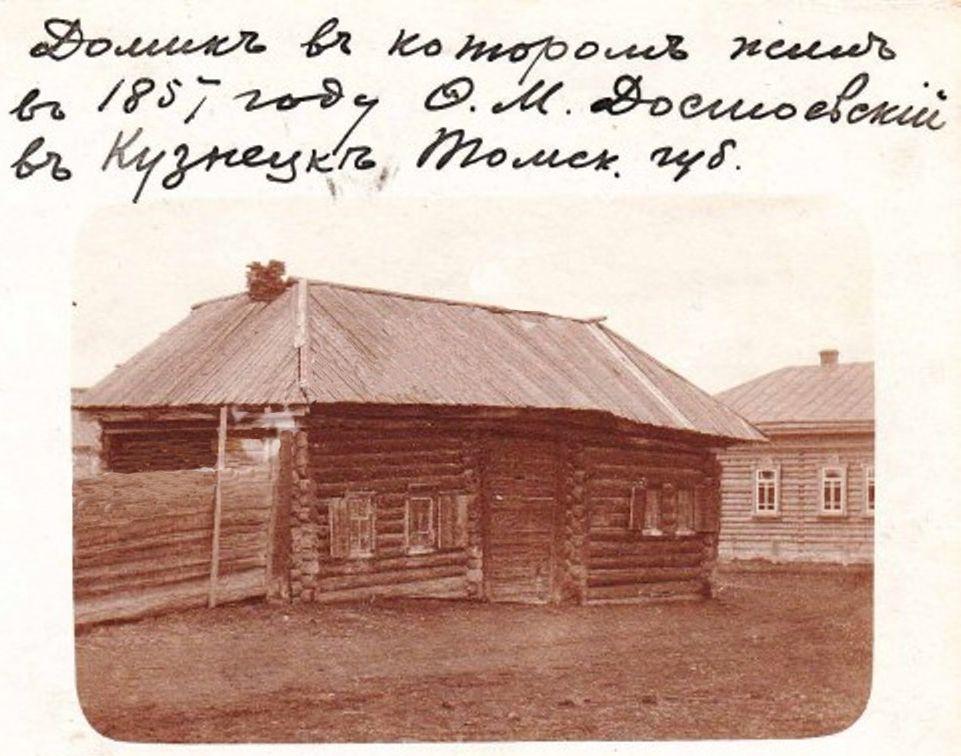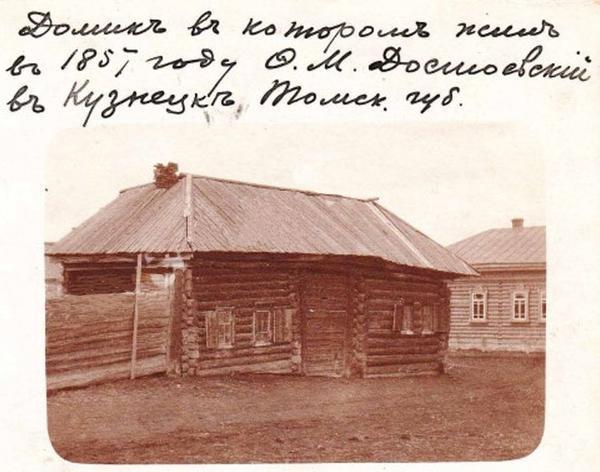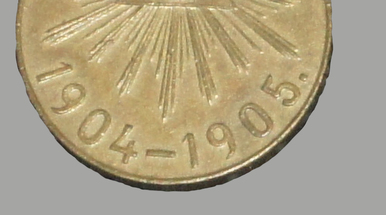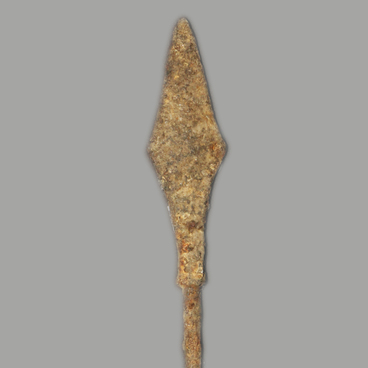In the years 1856-1857, famous writer Fedor Dostoevsky visited Kuznetsk several times. His beloved, Maria Isaeva, was a 38-years old lady, still young, well educated, very smart, kind, sweet, and graceful, with an excellent, generous heart. They met in 1854 in Semipalatinsk, where Dostoevsky served. The writer fell deeply in love, but Maria Dmitrievna was married to a government official, Alexander Isaev, and therefore she did not reciprocate, even though her husband lost his job and became addicted to alcohol, and their marriage as a whole was not very happy.
Soon, the Isaevs moved to Kuznetsk. For many months, Dostoevsky corresponded with his beloved, sobbing aloud like a child. Later, he received news from her about the death of her husband. Then the writer asked Isaeva in marriage, but he could not get an answer for a long time. In Kuznetsk, Maria Dmitrievna had a warm relationship with local teacher Nikolai Vergunov, and Dostoevsky was terribly jealous of his beloved. In the end, however, Isaeva accepted the writer’s proposal.
Before the wedding, Dostoevsky visited Kuznetsk three times. He could not stay at Bolshaya Street (now Dostoevsky Street) in the house of Isaeva: it would be considered improper. Therefore, the writer lived in the house of the local citizen Vagin.
Researchers know almost nothing about Vagin, except that he belonged to the family of Kuznetsk old-timers who lived in the city from the 17th century. Vagin’s house has not been preserved to this day, and for a long time, historians did not have any information on how it looked. Then, in the 2010s, Novokuznetsk local historian Igor Chervyakov accidentally discovered an old photograph of Vagin’s house, which was kept in the collection of Sergei Biryukov, who used to be vice governor of Tomsk in 1903-1906. So he found out that Dostoevsky stayed in an inconspicuous wooden house at Kartasskaya Street.
A well-known expert on the local history of Kuznetsk, Dmitry Yaroslavtsev, described Vagin’s house in the following manner: Dostoevsky lived in Vagin’s house in Kartasskaya Street (corner of Blinovsky Lane). The house was one-story, old, consisting of two parts (two log constructions connected with a passage); its roof was covered with wood lathing. The house had low ceilings and small colored glass windows. The house, unfortunately, has not been preserved; it was dismantled for firewood. There is a wasteland at its place now.
The neighborhood where both Vagin’s house and Isaev’s house were located was called Podgorye in the 19th century. It is called Forshtadt today. Even after almost a hundred years, the grid of streets in this part of the city has not changed much, although only few historical buildings have survived
Soon, the Isaevs moved to Kuznetsk. For many months, Dostoevsky corresponded with his beloved, sobbing aloud like a child. Later, he received news from her about the death of her husband. Then the writer asked Isaeva in marriage, but he could not get an answer for a long time. In Kuznetsk, Maria Dmitrievna had a warm relationship with local teacher Nikolai Vergunov, and Dostoevsky was terribly jealous of his beloved. In the end, however, Isaeva accepted the writer’s proposal.
Before the wedding, Dostoevsky visited Kuznetsk three times. He could not stay at Bolshaya Street (now Dostoevsky Street) in the house of Isaeva: it would be considered improper. Therefore, the writer lived in the house of the local citizen Vagin.
Researchers know almost nothing about Vagin, except that he belonged to the family of Kuznetsk old-timers who lived in the city from the 17th century. Vagin’s house has not been preserved to this day, and for a long time, historians did not have any information on how it looked. Then, in the 2010s, Novokuznetsk local historian Igor Chervyakov accidentally discovered an old photograph of Vagin’s house, which was kept in the collection of Sergei Biryukov, who used to be vice governor of Tomsk in 1903-1906. So he found out that Dostoevsky stayed in an inconspicuous wooden house at Kartasskaya Street.
A well-known expert on the local history of Kuznetsk, Dmitry Yaroslavtsev, described Vagin’s house in the following manner: Dostoevsky lived in Vagin’s house in Kartasskaya Street (corner of Blinovsky Lane). The house was one-story, old, consisting of two parts (two log constructions connected with a passage); its roof was covered with wood lathing. The house had low ceilings and small colored glass windows. The house, unfortunately, has not been preserved; it was dismantled for firewood. There is a wasteland at its place now.
The neighborhood where both Vagin’s house and Isaev’s house were located was called Podgorye in the 19th century. It is called Forshtadt today. Even after almost a hundred years, the grid of streets in this part of the city has not changed much, although only few historical buildings have survived



